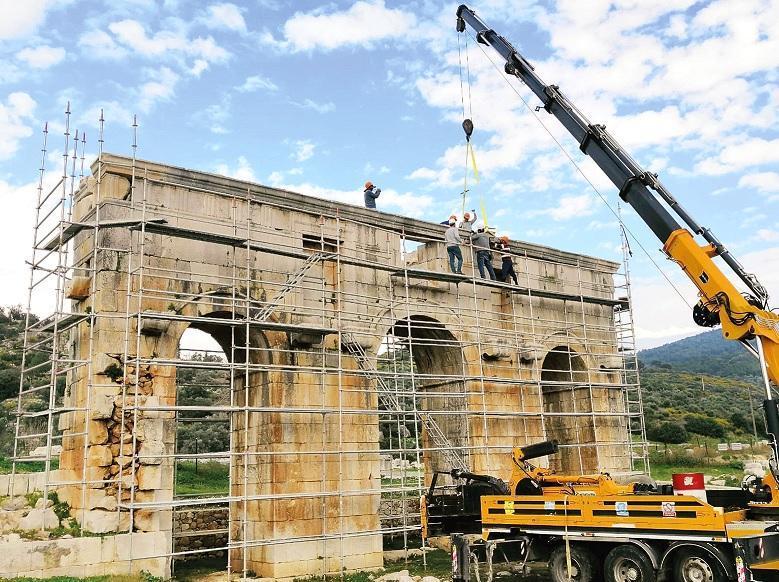
The city gate in the ancient city of Patara in the southern province of Antalya, which is believed to date back 2,000 years and said to be unique in the world in terms of its water transfer duty, will get its former glory with a restoration.
The head of Patara excavations, Havva İşkan Işık, a professor at Akdeniz University’s department of archeology, said that Patara is one of the most important ancient cities, the capital of the Lycian Union and the Lycian province.
Stating that the city gate is the symbol of Patara, Işık stated that the project prepared for the restoration of this place was accepted by the Antalya Conservation Regional Board.
Conveying that the Antalya Restoration and Conservation Laboratory experts started restoration works with the excavation committee, Işık said, “We aim to replace only its stones in the building by examining their durability and physical condition. In addition, it is on the agenda to erase a slogan written in paint on the north face in the 1980s.”
Stating that they aim to complete the works within a month if not interrupted, Işık said that the restoration was mainly done to arrange dislocated blocks above the gate due to earthquakes, to replace a broken console piece, to replace the stones found in the excavation of the collapsed pool and to secure cracks and breaks for conservation purposes.
‘Unique in the world with this feature’
Noting that the city gate of Patara is one of the landmarks of the Lycian capital, Işık said, “The structure, which was probably planned during the Claudius period, which made Lycia a Roman province, was later completed during the eras of the emperors Nero and Vespasian. Later, the inscriptions engraved on the consoles of the gate, honored the Lycian Governor Mettius Modestus and his family members. The statues of Emperor Traian and his wife Plotina were put together on the top of the gate.”
Işık stated that the words “It was built by the people of Patara, the metropolis of the Lycian nation” were bilaterally placed in the stone rows at the top of the 19-meter-wide and 10-meter-high door.
“What makes this city gate unique in all of Anatolia and in the world is that it is also a water structure. The gate also has the task of transferring water as a reverse siphon. The 2,000-year-old Patara city gate, which is unique in the ancient world, is of great importance.”
Işık said that the water carried over the gate with the pipes from the east side poured down through the middle opening, and poured into the pool constructed outside on the west side.
Işık added that the water was distributed from here to the necessary places, especially the place known as the Harbor Bath.